The ammonium dichromate volcano reaction, sometimes called ammonia fireflies, is one of the most iconic chemistry demonstrations, yet the risks associated with the using chromium(VI) salts have led to them being banned in many countries, including recently Ireland. Despite the risks, it is entirely possible to safely execute this demonstration if you follow the proper safety procedures.
In my early career I performed this demonstration a number of times, but the clean-up was always off-putting. I didn’t think it was fair to leave potentially carcinogenic powder around for my technicians or cleaning staff to be exposed to. Unless the lesson was immediately before a break in the day, I struggled to find the time to adequately clean up after myself, especially when sharing labs with other teachers.
So I was delighted when I saw a recent blog post suggesting the simple idea of doing the whole thing in a large flask to contain all the waste powder (ready to be transferred into a bag for disposal). It looks like the dichromate volcano might just be back on the menu.
Kit
- Ammonium dichromate(VI), 5 g, (toxic, causes severe skin burns and eye damage, may cause breathing difficulties by inhalation, may cause genetic defects, may cause cancer, damage fertility or the unborn child. See CLEAPSS Hazcard 7)
- Conical or round-bottomed flask ≥ 1 dm3
- Glass tube or similar for delivering the powder into a small pile
- Tripod and gauze or clamp stand
- Bunsen burner
- Mineral wool
Preparation
Wear gloves and splash-proof goggles. Working in a fume cupboard which is not switched on and with the sash partially lowered, weigh out no more than 5 g of the ammonium dichromate(VI) and use a glass tube or paper cone to transfer the solid into a small conical pile in the centre of the base of a 1 dm3 conical or round-bottomed flask. Place the flask above a Bunsen using a clamp, or a tripod and gauze, then use a piece of mineral wool to loosely plug the neck of the flask to prevent powder from being ejected during the reaction. With the mineral wool in place the demonstration can be performed in the open lab. A metal spatula can be rested on top of the neck of the flask to help prevent the plug being blown out by the gases from the reaction.
In front of the class
The audience should wear eye protection. Hold the tip of the Bunsen flame under the centre of the pile of powder. Do not use other ignition methods as these can result in powder being ejected before the mineral wool plug can be re-inserted. After a few seconds the powder will begin to thermally decompose, sparks will be ejected from the centre and the powder will turn green and expand, forming an impressive volcano-like effect.
Teaching goal
The overall equation for the reaction is usually quoted as:
(NH4)2Cr2O7(s) → Cr2O3(s) + N2(g) + 4H2O(l)
Using the plug to contain the products makes this demonstration a useful opportunity to compare the mass of the flask and contents at the end with that before the reaction (CLEAPSS subscribers can obtain further information on guidance for this activity by contacting them). However, it has been noted that the olive green-coloured compound left behind contains more oxygen by mass than would be consistent with this equation, perhaps as surface oxides. Further reduction of the solid yields a paler, brighter green more consistent with other Cr(III) salts.
The orange-to-green colour change is associated with the change of chromium’s oxidation state from (VI) to (III). Observant students may note that in an oxidation state of +6, the chromium ion should to have no electrons to facilitate the type of d–d transition they may have been taught leads to colour in transition metal complexes. The colour here originates, much like that of the MnO4– ion, from a ligand-to-metal charge transfer: visible light is absorbed as an electron moves from an oxygen to a chromium centre.
Health and safety
- Wear splash-proof goggles.
- Protect the face.
- Wear gloves to transfer or dispense the solid.
- Use a mineral wool plug to prevent loss of solid/dust particles from the vessel.
- Avoid raising dust and wipe up spills immediately with a damp cloth/paper towel.
- Do not mix ammonium dichromate(VI) with other substances.
Disposal
Allow the apparatus to cool then, wearing gloves (in case there is unreacted ammonium dichromate(VI) present), use tongs or forceps to remove the mineral wool plug and place it with the solid residue straight into a suitable plastic bag, which can be sealed and placed in the normal solid waste.
Downloads
Technician notes: Containing the dichromate volcano
Word, Size 53.47 kbTechnician notes: Containing the dichromate volcano
PDF, Size 89.43 kb



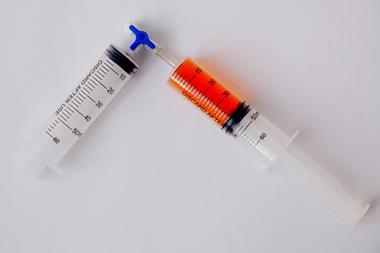

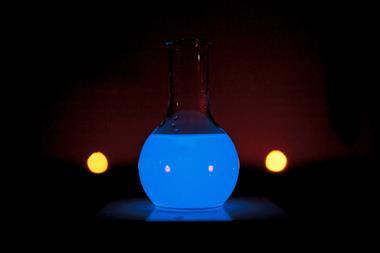
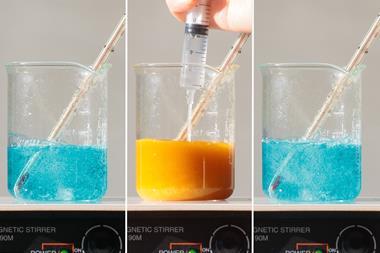
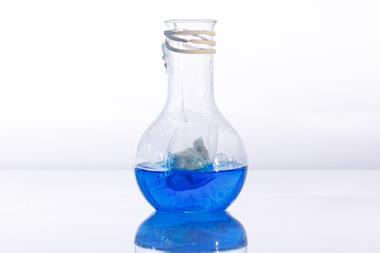
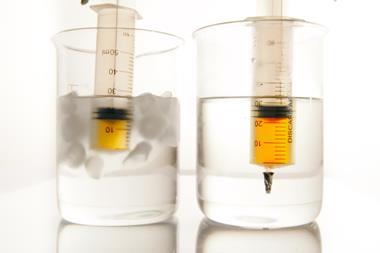

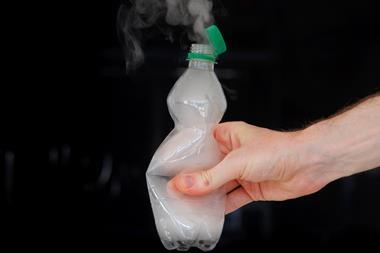
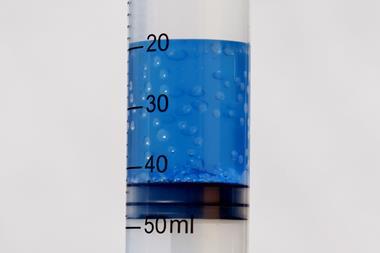







No comments yet